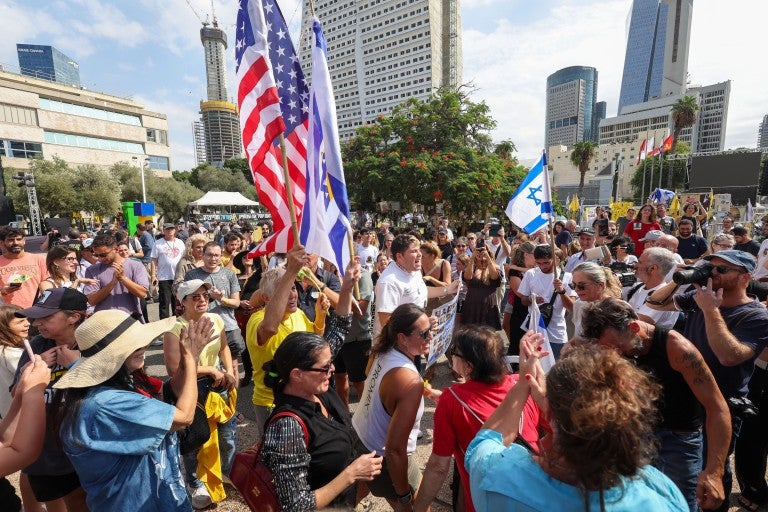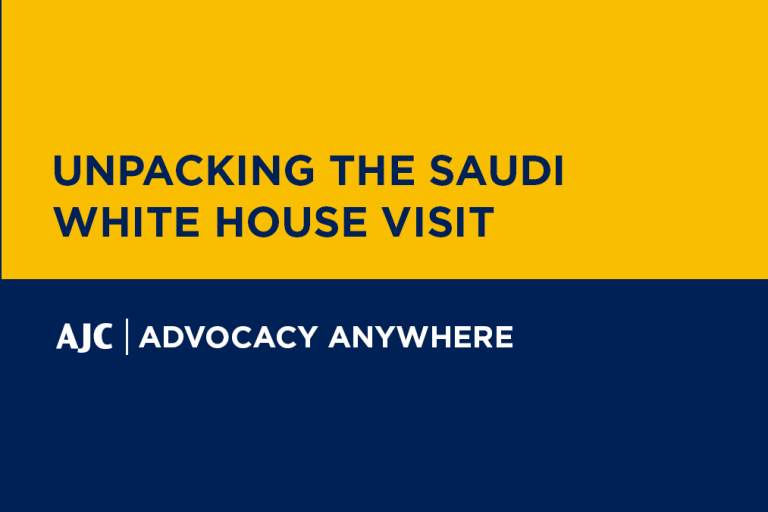April 10, 2018
More than 30,000 Palestinian protestors gathered near the Gaza-Israel border on Friday, March 30, for the “March of Return,” marking the beginning of a Hamas-led six-week demonstration calling for the destruction of the Jewish state. As expected, the protests continued this past weekend with estimates of 20,000 protesters.
The vast majority of Gaza’s residents—about 99 percent—did not participate. But gangs of young Palestinian men approached the border and hurled rocks, Molotov cocktails, and burning tires—and opened fire—at Israeli troops manning the area, who then retaliated, resulting in the bloodiest clashes in Gaza since 2014.
During the first two weeks of the protests, 31 Palestinians were reported killed and hundreds more injured, according to the Palestinian Health Ministry, setting off a new wave of Israeli-Palestinian tension that is only likely to escalate.
Here are six things you need to know about the protests:
1. The Terrorist Connection
The Israeli army has identified at least 11 of the dead Palestinians as terrorists. Eight were members of, or affiliated with, Hamas, and the terrorist group confirmed that five were members of its military wing, the Izz ad-Din al-Qassam Brigades. One belonged to Fatah’s Al-Aqsa Martyrs Brigades, the militia of the Palestinian Authority, led by President Mahmoud Abbas, which lost control of Gaza in 2007. Anti-Israel activists slammed Hamas for admitting that many of those killed during the protests were in fact terrorists, on the grounds that this would damage the Palestinian campaign.
2. Who Funds Hamas’s Terror Activities on Israel’s Border?
While Hamas is designated a terrorist group by the U.S., the EU, the UK, and others, it enjoys unequivocal support from the world’s foremost state sponsor of terrorism: Iran. According to Hamas, Iran is currently “the largest backer financially and militarily” of its military wing. As the protests raged, Iran’s Supreme Leader gave an interview in which he reaffirmed his nation’s full support for Hamas and told Palestinians to eschew negotiations with Israel and instead focus on fighting the Jewish state.
3. What Hamas Hopes to Achieve
Anti-Israel events sponsored by Hamas generally invoke violence and horrifying tactics, including the use of human shields. According to one report, Hamas sent a 7-year-old girl to the border fence during the first weekend of clashes. Ismail Haniyeh, a senior leader of Hamas, showered Palestinian children with praise for their involvement in the mass protests. “The children of Palestine and Gaza, who bravely challenged the Israeli military, relayed a message to the world that the Palestinians can’t be defeated and are determined to achieve the right of return and end the [blockade] on the Gaza Strip,” Haniyeh said.
Against the backdrop of Palestinian politics, the Hamas-sponsored protests are clearly intended as a power play. Hamas’s main rival is Fatah, whose chairman, Mahmoud Abbas, is the president of the Palestinian Authority. The question of who will succeed the 82-year-old Abbas has further divided Palestinians.
4. International Double Standards
The death of Palestinians at the protests made headlines, spurred international calls for de-escalation on both sides, and sparked an outcry from a plethora of human rights groups and Middle East leaders. Bizarrely, Turkish President Recep Tayyip Erdogan – whose army invaded Kurdish-populated northern Syria ostensibly to protect the Turkish border – labeled Israeli Prime Minister Benjamin Netanyahu a terrorist for the IDF’s attempts to defend Israel’s border.
PM Netanyahu: Erdogan is not used to being talked back to. He should start getting used to it. He who occupies Northern Cyprus and the Kurdish region and butchers civilians in Afrin should not lecture us about morality and values.
— Prime Minister of Israel (@IsraeliPM) April 1, 2018
Weeks ago, journalist Khaled Abu Toameh, a longtime observer of the Israeli-Palestinian conflict, reported that 23 Palestinians were killed. Those deaths went unnoticed by the international community and purported “pro-Palestinian” groups because they occurred in civil-war-torn Syria, not as part of a terrorist group’s protest on Israel’s border. Abu Toameh noted that over 3,600 Palestinians have been killed in Syria since the start of the civil war there seven years ago.
Report: 23 PALESTIIANS killed in SYRIA during March. (3,685 Palestinians killed since beginning of civil war)
— Khaled Abu Toameh (@KhaledAbuToameh) April 2, 2018
5. Claims of Disproportionate Force
Some in the international community have called Israel’s actions to protect its border disproportionate. But like any other sovereign country, Israel has a right to defend itself. The fence between Israel and the Gaza Strip separates a sovereign state that wants to protect its citizens from a terror organization that deliberately sends civilians into danger. It separates an army that uses force for self-defense in a precise and proportionate manner from an organization that for years has sought to kill Israeli civilians and wipe Israel from the map. Hamas organized the mass protests despite clear forewarnings from the Israeli government that it would defend its border against provocations, just as any other nation would.
6. What’s Next?
Several Palestinian leaders have promised more “surprise” protests. The next important date is April 17, Palestinian Prisoners Day, the day before Israel begins celebrations around its 70th year of independence. The culmination of the protests will come in mid-May, when the U.S. opens its embassy in Jerusalem. “There’s more in stock,” vowed Khaled Mashal, the Hamas head, last week in Istanbul.


